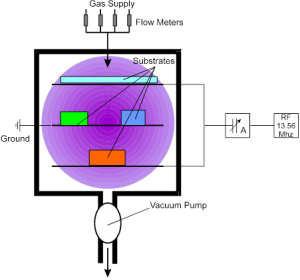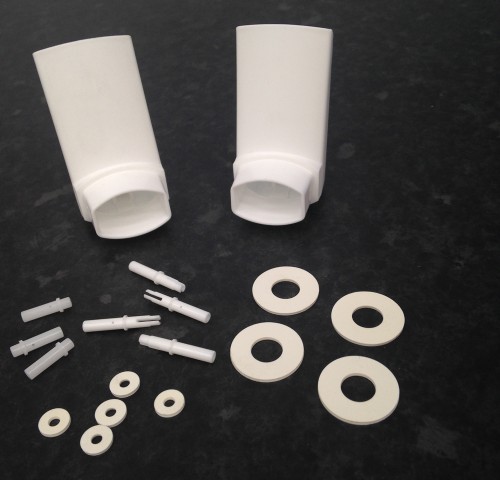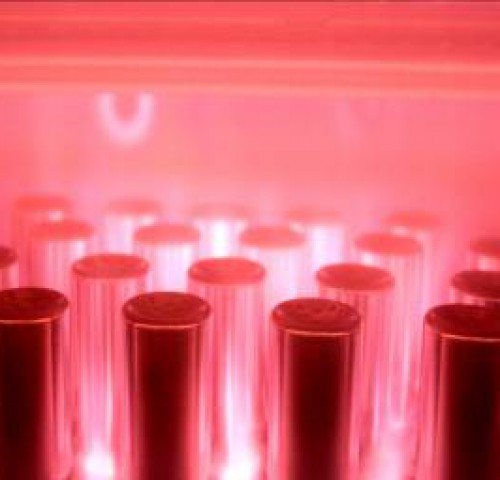Surface Technology
Interaction of device materials with their environment (biocompatibility, drug interactions or general atmosphere), actuation or application forces, durability and shelf life are all dictated by surface properties; chemical, physical or both. Often it is the outermost nanometres or few molecular layers which are of most interest.![]()
Plasma Processing and Nano Film Surface Technology
Increasing trends in device miniaturisation are themselves forcing new innovations in surface technology and plasma applications. Ability to clean, modify and coat or treat surfaces in a controlled way with precise uniformity, controlled chemistry and chemical structure opens up new opportunities for device innovation, design and performance, but brings with it challenges for existing coating technology. Traditional dipping or spraying technologies suffer with the problems of high temperature processing, inability to coat complex geometries and process residues. Plasma processes forming nanometer coatings overcome these issues.
Portal Medical are leaders in the applications of plasma process surface technology, enabling the modification of a material surface at the nano-scale without affecting the bulk properties of the underlying material.
What is Plasma?
Plasma is considered to be the fourth state of matter. Plasma is an ionized gas, a gas into which sufficient energy is provided to free electrons from atoms or molecules and to allow both species, ions and electrons, to coexist. The technology outlined here refers to non-equilibrium plasma.

Accurate control of the Plasma Process
Precise control of the reliability and consistency required for medical devices is best achieved under low pressure vacuum conditions (1e-2 to 9e-1 mbar).

Components to be treated are loaded into a vacuum chamber which is evacuated and back filled with the desired process gas or vapour. This is then energised by for example capacitively coupled or induced radio frequency (RF), microwave or low frequency energy sources. Depending on the requirement of the process the energised species can then be used to clean, etch or chemically modify the outermost monomolecular layers of the surface of interest. In addition, parameters can be controlled to force polymerisation of ionised monomers at the surface of components forming highly controlled surface films in the 1-250nm range.
Advantages of the Plasma Process
Plasma’s have a unique advantage over traditional coating processes. Very high energies can be confined to very thin layers without mass heating. This means surfaces can be etched, cleaned, sterilized or modified even if they are ‘delicate’ or soft thermoplastics without melting or approaching glass transition temperature. This is ideal when treating for example pMDI valve componentry.
Flat surfaces, enclosures, bores, re-entrant shapes and lumens can all be treated efficiently.

Complex geometries and small lumen can be coated both internally and externally by carefully controlled process conditions

Gas plasma coating of pMDI canisters
Line of Sight – Uncontrolled deposition
Plasma is generated outside the canister and relies on force of attraction when the canister is either held at earth or adopts a self bias (floating potential). The coating process becomes partially line of sight and is non-uniform. The plasma field depletes with depth of canister, leading to a build up of coating around the 'throat' of the canister with a depletion down the walls and in the base corner.
Presspart Plasma Coating – Controlled deposition
Portal Medical has a patented process which concentrates the plasma coating inside the canister. The plasma is d.c. bias controlled to keep a constant plasma intensity within the canister. This results in a uniform pin hole free coating on all geometries of the canister.
Presspart Surface coating animation
Presspart plasma coating (developed by Portal Medical Ltd) uses ionised inert gas molecules to clean the surface of the aluminium canister, stripping away any surface impurities on a nanoscale. The native oxide is removed exposing the underlying aluminium substrate. A pre-cursor gas reacts with the substrate to form an inert, stable graded interface, grading into the coating layer. The resultant coating is tightly bound and robust. Other plasma coating processes do not remove the native oxide layer, leading to a weak interface. A subsequent coating bound to this layer can suffer from porosity and delamination issues.
The WHO (World Health Organisation) estimates 235 million people have asthma.
64 million people have COPD and it is estimated by 2030 that COPD will be the 3rd biggest cause of death after heart disease and cancer.
Worldwide annual deaths from COPD is 4.8%


